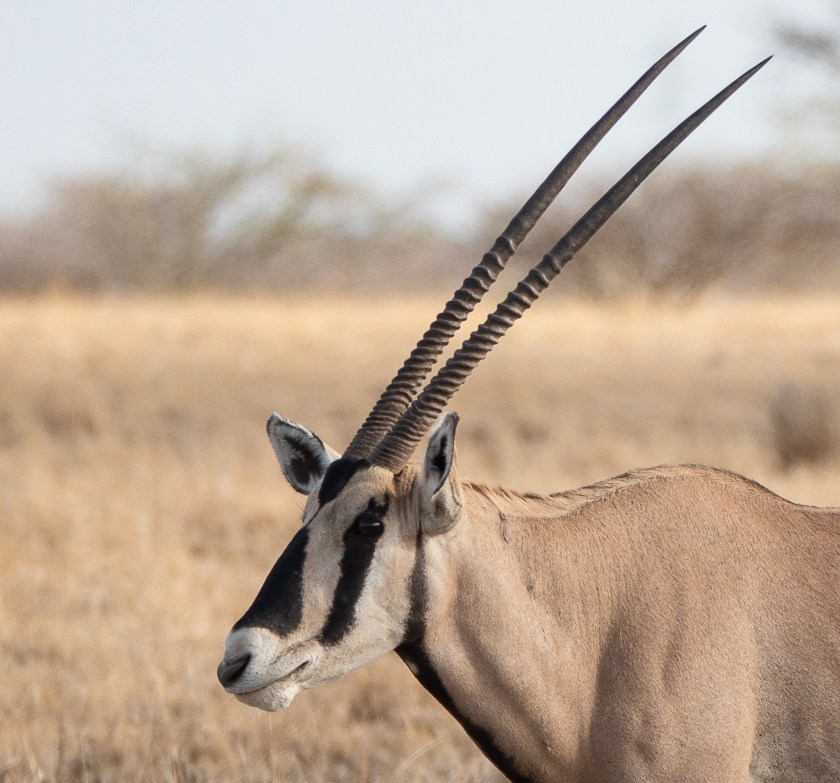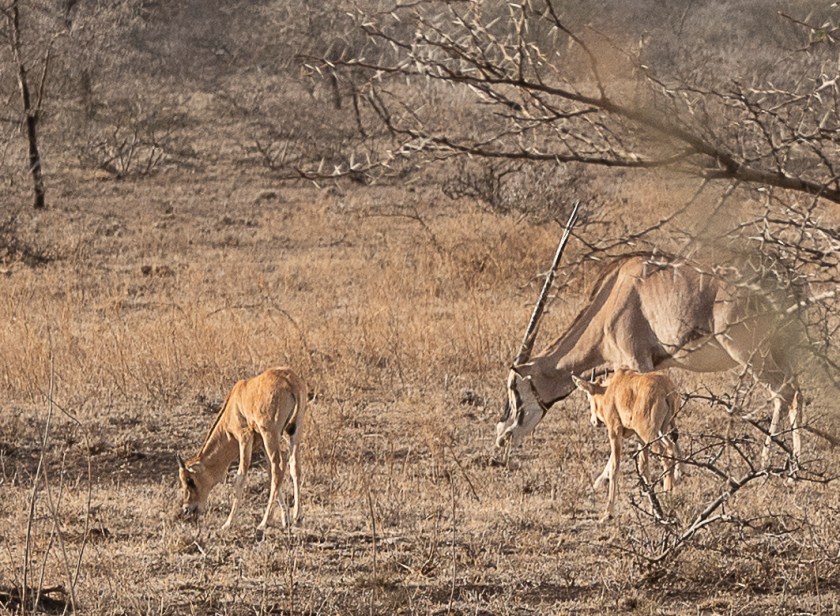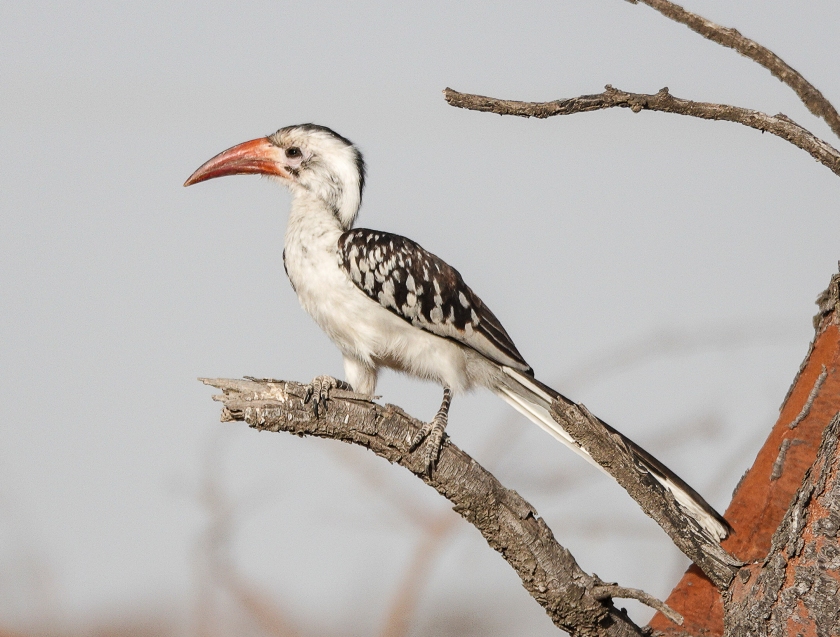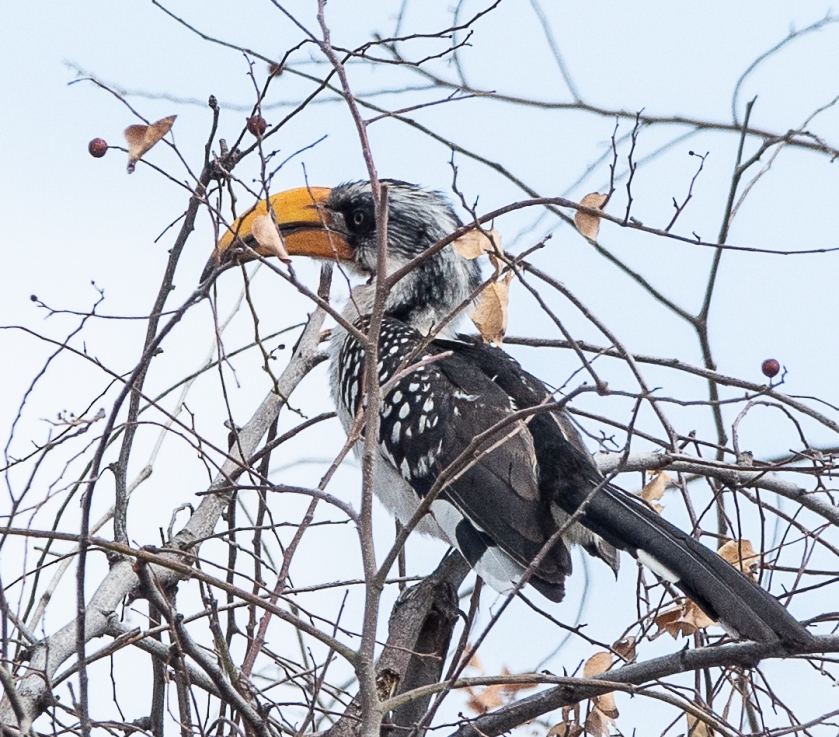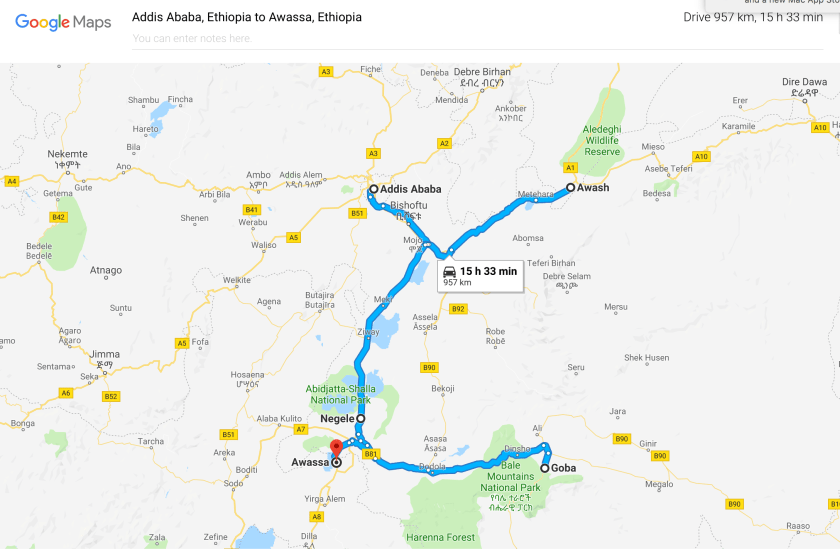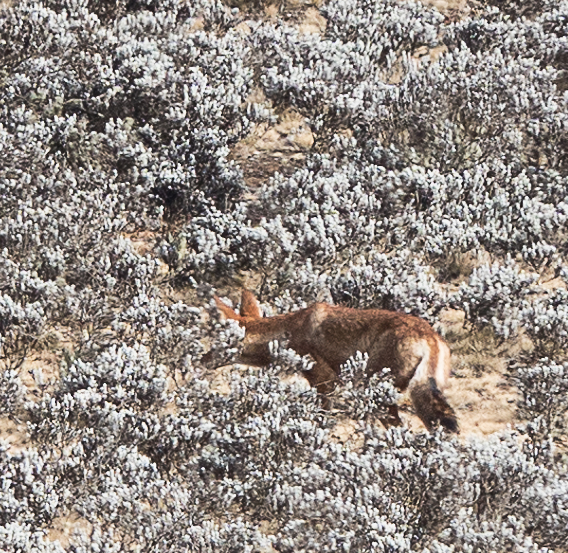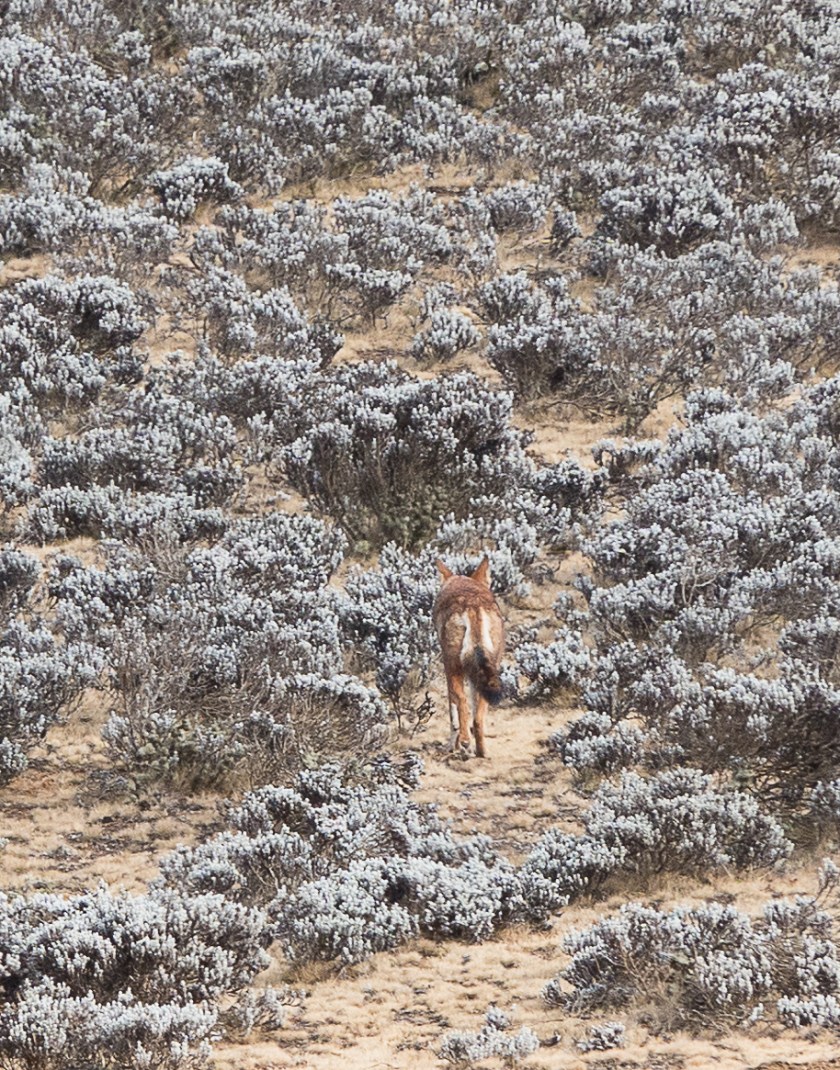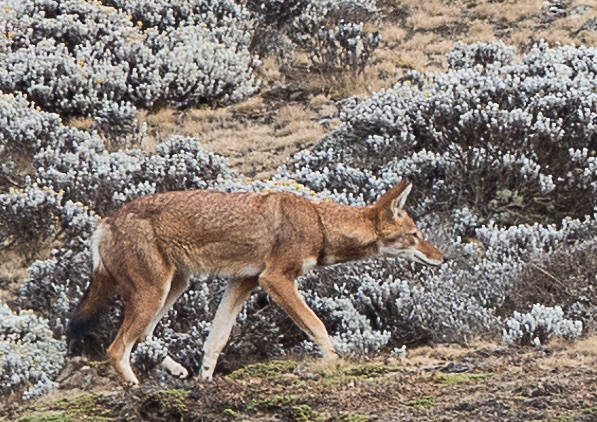In the early morning geladas indulge in a little sun worship:

And then they get down to serious grooming. Look at the face of this client: obviously the groomer has hit exactly the right spot:

The wind is fierce up there. Some of them revel in it:

Others shelter behind boulders:

A little later on they head for the plateau to feed. Alone among primates, their diet is composed almost entirely of grass: this one is defending his patch:
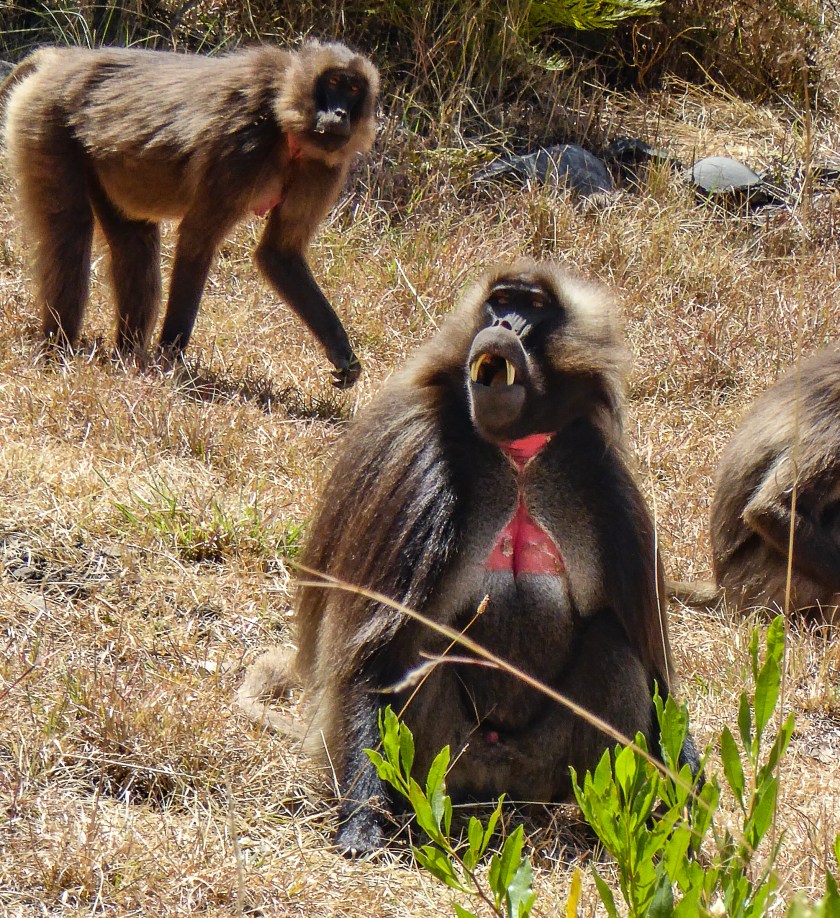
When feeding, they move around on their bottoms in “shuffle gait”. They are not endangered, with around 250,000 left in the wild, but their habitats are slowly but surely shrinking.
I had hoped (but failed) to hear them “wobble”. They are one of the few animals to make sounds like human consonants (involving closing of the mouth or lips), as well as vowels. Here is a video of their wobble: (Bergman 2013)

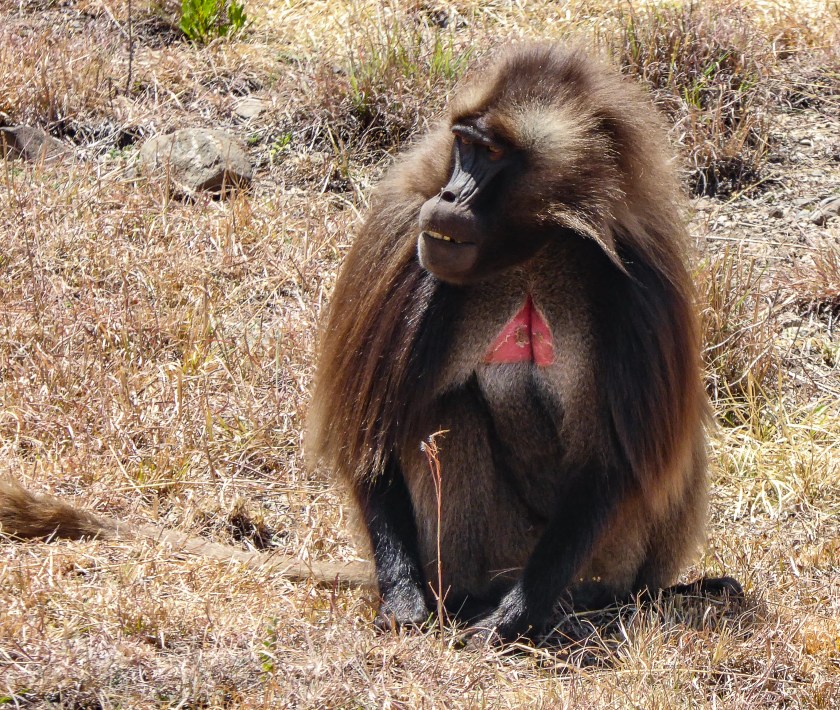
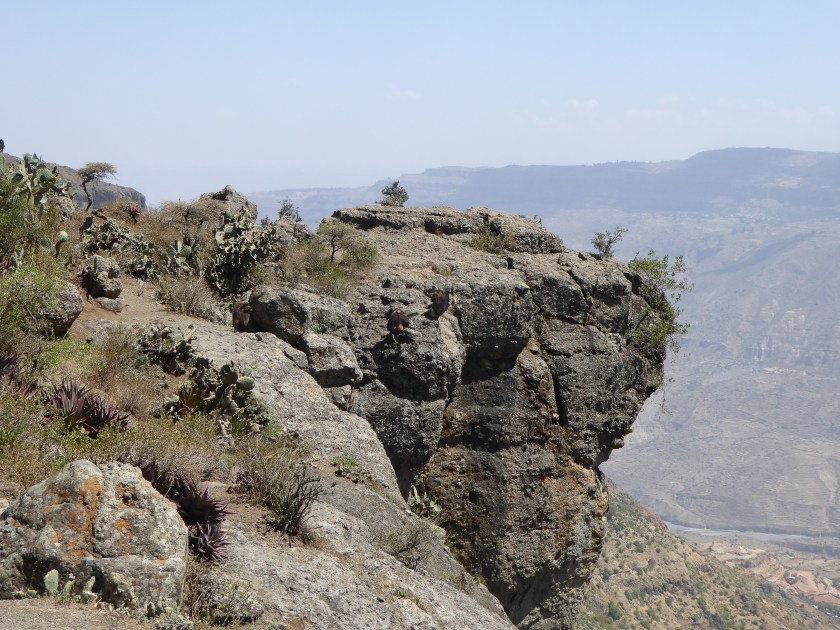


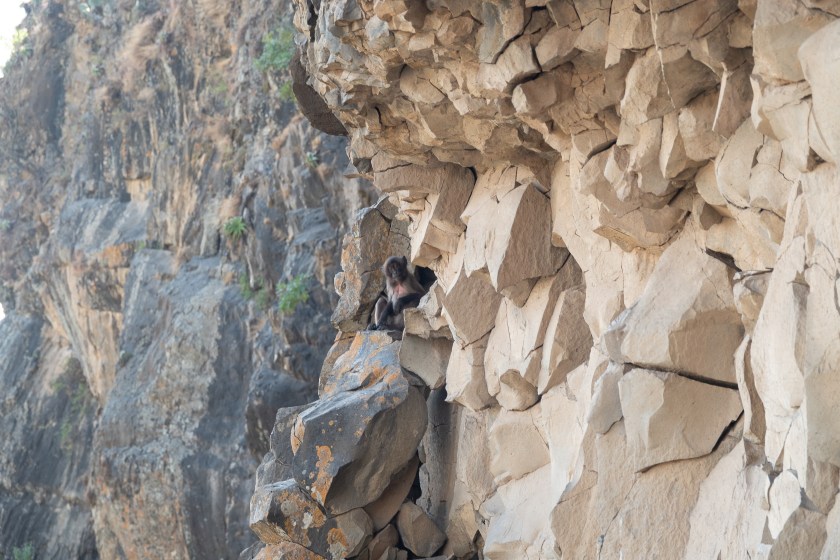
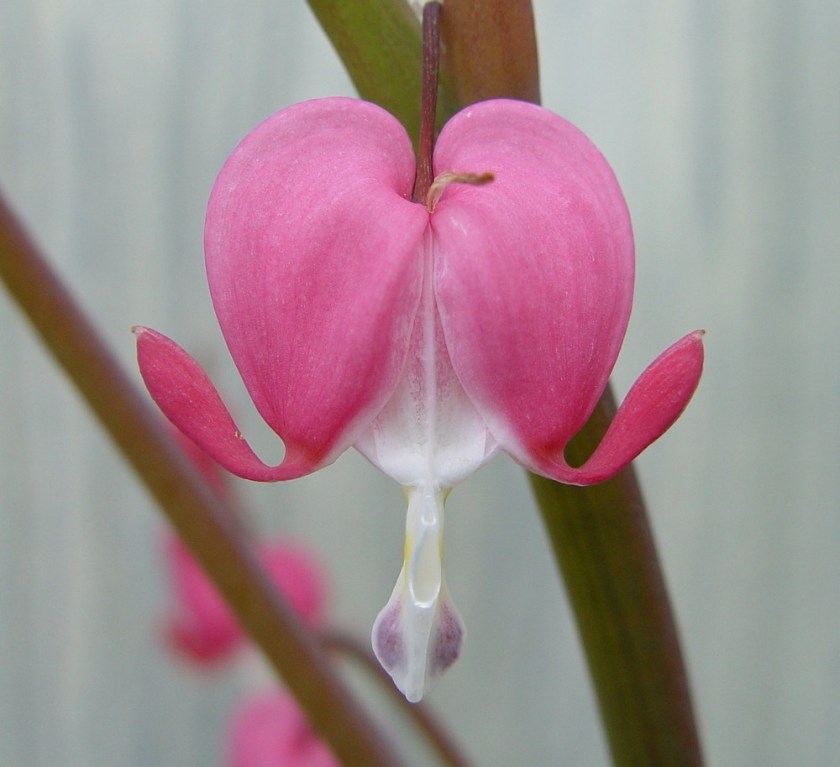
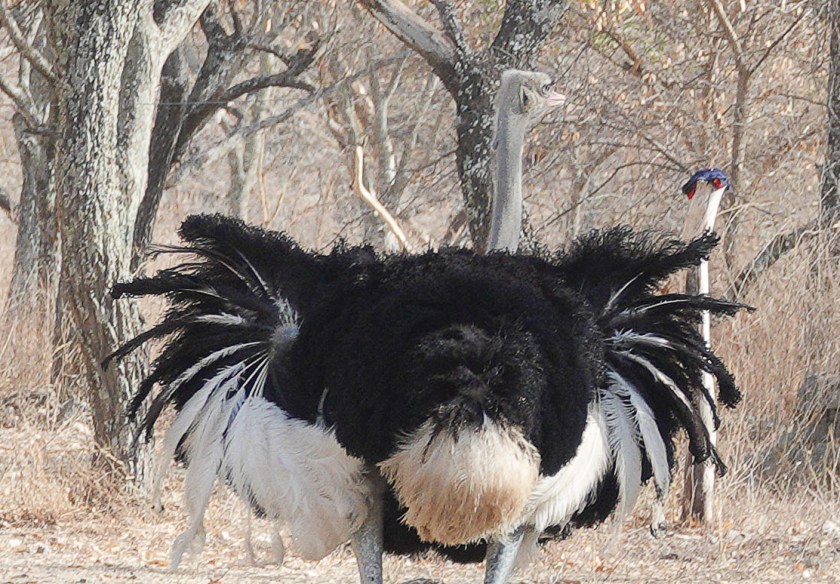

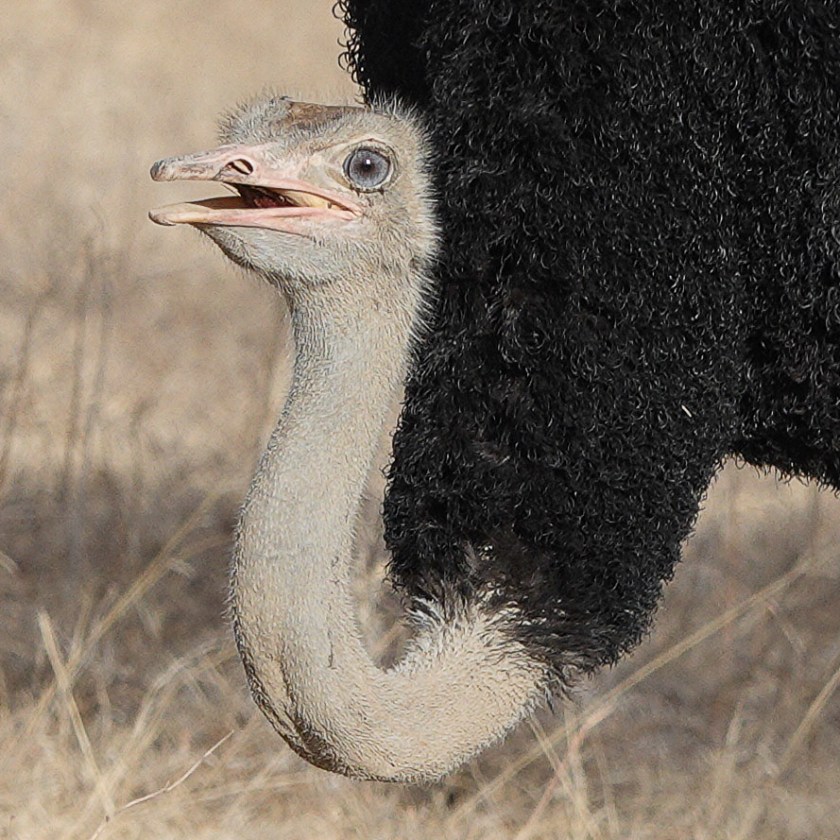
 s:
s:




